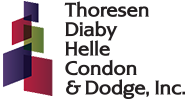
Agility — or the ability to react quickly — is essential to surviving and thriving in today’s competitive landscape. Though agile techniques were originally used in the realm of software development, this concept has many applications in the modern business world, including how companies approach their internal audits. Here’s an overview of agile auditing and why many internal audit teams are jumping on the bandwagon.
The basics
Whereas a traditional audit requires extensive planning, fieldwork and reporting, an agile audit moves at a faster pace. An agile audit also allows the audit team to continually refocus their attention and efforts where they’re needed the most.
Agile auditing relies on the following key concepts:
Audit backlogs. The audit team keeps a backlog of reviewed and approved audit programs. As the environment evolves, the audit team can add, remove or reprioritize audit programs within the backlog. This dynamic approach ensures that the audit team focuses on the most pressing issues — and minimizes the likelihood that they’ll waste time on an issue from a previous audit plan that’s no longer relevant.
User stories. Auditors create user stories that are made up of:
- A user,
- An action, and
- An outcome.
Each story corresponds to a unit of work related to the audit. The user is the individual responsible for performing critical tasks related to the story. The action is what the user must do to generate a desired outcome.
For example, a retailer (the user) wants to process credit card payments from customers online (the action), so they can order online (the outcome). Creating a story provides the audit team with an understanding of the user’s requirements and the desired outcome.
Audit sprints. With a story defined, the audit team can deliver their work in sprints. Each sprint is normally completed in one to four weeks. Sprints may include defined tasks and regular check-ins with stakeholders. A sprint has a planning phase and daily “scrums,” which are short meetings with the audit team and stakeholders. Items on the daily agenda include:
- Yesterday’s progress,
- The game plan for today, and
- Potential challenges to completing the sprint.
Each sprint concludes with the delivery of preliminary results to stakeholders. Reviewing the results of each sprint gradually over the course of the audit helps minimize surprises when the final audit report is submitted to stakeholders.
Benefits abound
Agile auditing facilitates more frequent and timelier communications between auditors and stakeholders. This can lead to more robust partnerships and improvements in the accuracy and integrity of audit team’s findings. More frequent communication also allows the audit team and the business to identify and resolve problems quickly.
Contact us for more information. We can help you decide whether you’re ready to transition to a more agile auditing approach and, if so, guide your internal audit team through the implementation process.
© 2021
